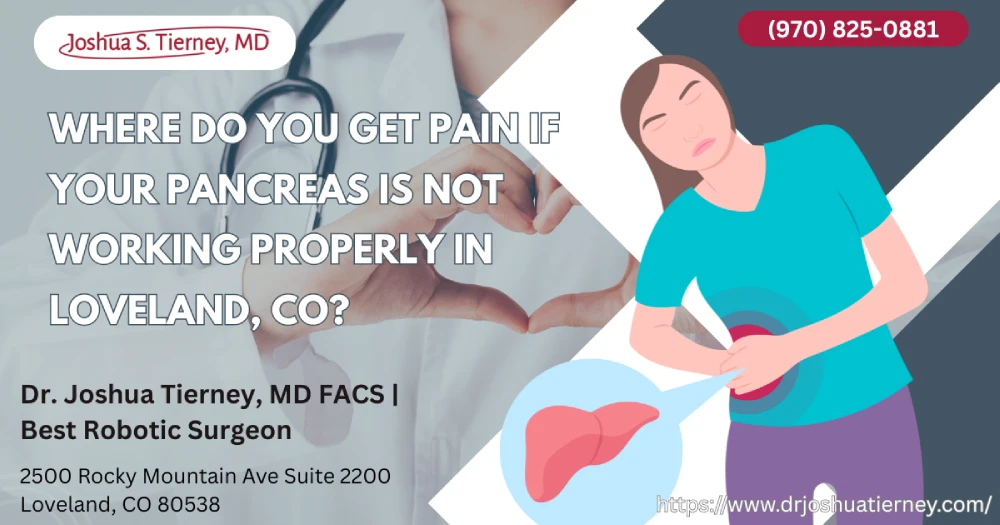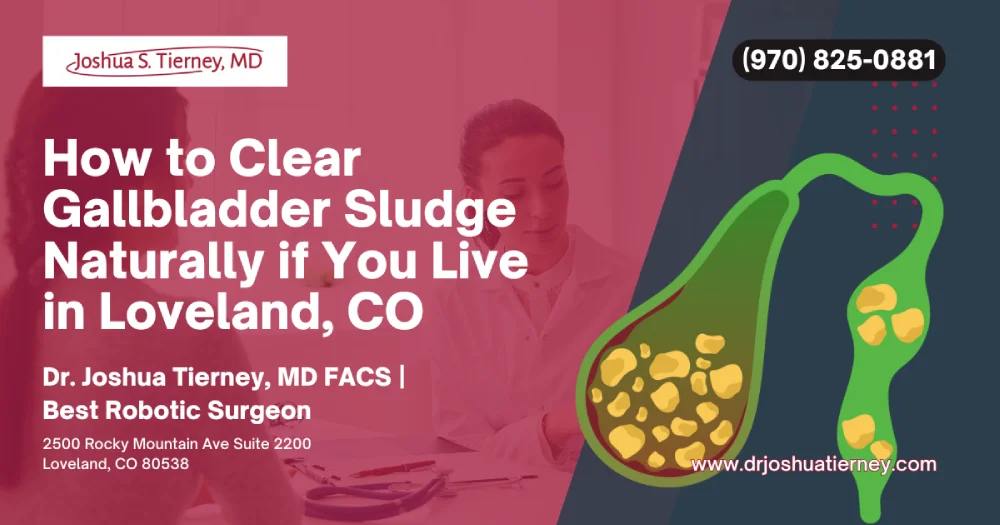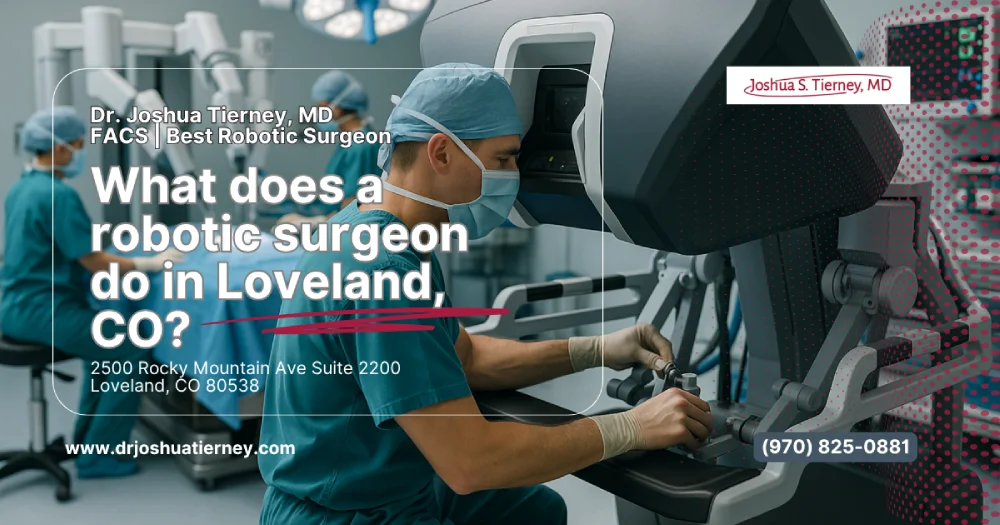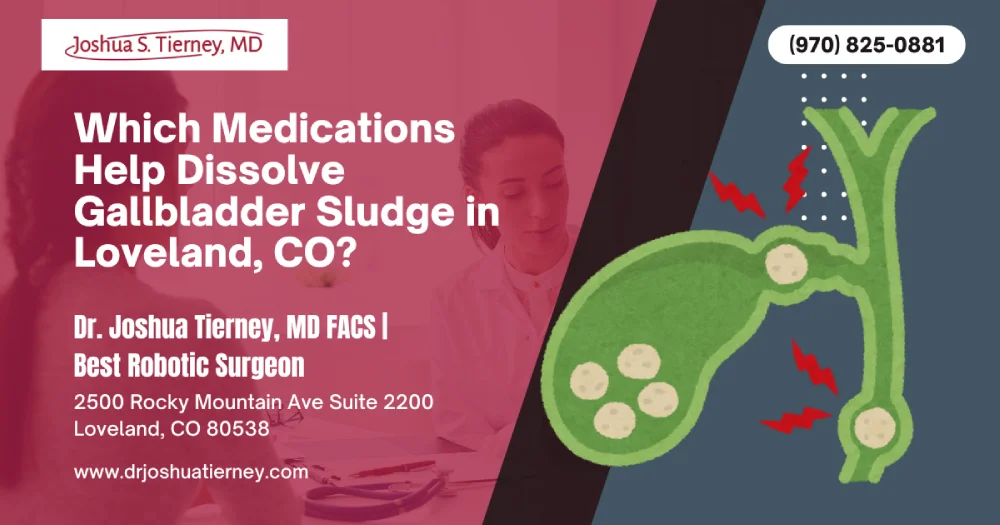Finding the exact spot—and the exact cause—of pancreatic pain can be tricky. Yet knowing those details is crucial if you live in Loveland, Greeley, or the greater Fort Collins area and want fast, effective relief. As a fellowship-trained pancreatic surgeon who treats patients throughout Northern Colorado, I’ve seen how quickly inflammation of the pancreas can move from nuisance to emergency. Below you’ll discover where pain appears, why it happens, and how a customized treatment plan—often combining GI medicine and minimally invasive surgery in Loveland—can restore comfort and digestive health.
Key Takeaways
- Pancreatic pain starts high in the abdomen, often left of center, and can bore straight through to the back.
- Nausea, vomiting, bloating, and fatty stools suggest that digestive enzymes within the pancreas are misfiring.
- Acute pancreatitis is an emergency; chronic pancreatitis erodes quality of life but is highly treatable with early care.
- Local resources—UCHealth, Banner, and top-rated private practices—offer cutting-edge imaging, endoscopic retrograde cholangiopancreatography (ERCP), and minimally invasive surgery.
- Lifestyle changes such as quitting alcohol and easing the digestive tract with low-fat meals dramatically reduce flare-ups.
- A gastroenterologist in Loveland coordinates closely with pancreatic surgeons like Dr. Joshua Tierney to develop a treatment plan that fits your insurance plans and your day-to-day reality.
How the Pancreas Works—and Why It Sometimes Hurts
Tucked deep behind the stomach, the pancreas straddles your midline. The head of the pancreas nestles into the curve of the duodenum while the tail of the pancreas extends toward the spleen. Together, these parts produce enzymes that break down fat, protein, and carbs while also releasing insulin and glucagon to regulate blood sugar. When ducts clog or tissue swells, those powerful enzymes digest the gland itself, sparking abdominal pain that can feel like a blowtorch under the ribs.
Diseases Treated by Local Specialists
Doctors who treat pancreatic diseases in Loveland and Fort Collins see several recurring culprits:
- Acute pancreatitis—often linked to gallstones or binge drinking—causes sudden, severe pain.
- Chronic pancreatitis—commonly due to long-term alcohol use or genetic disorders—leads to scarring, malabsorption, and upper-abdominal pain that lingers for months.
- Pancreatic cancer—can block the bile duct, causing dull pain, jaundice, and unexplained weight loss.
- Inflammatory bowel disease and cystic fibrosis—though primarily bowel disorders—raise the risk of pancreatitis because they affect enzyme flow.
- Narrowing of the bile or pancreatic ducts from stones, trauma, or infection.
Each condition varies between patients. That’s why an appointment for a consultation with one of the region’s GI experts is the first step toward an accurate diagnosis and providing adequate pain control.
Mapping Pancreatic Pain: Location, Sensation, and Triggers
Pancreatic pain typically sits in the upper-central abdomen, just beneath the sternum, slightly left of center. Patients often say it “cuts right through” to the mid-back, settling between the shoulder blades. It may:
- Intensify 30 – 60 minutes after fatty meals or heavy alcohol use.
- Ease a bit when you lean forward, curl your knees, or sit upright.
- Increase when lying flat, coughing, or taking deep breaths.
Unlike gallbladder pain—which tends to hit under the right rib cage—or heartburn, pancreatic pain rarely responds to antacids. Accurate description helps your GI team decide whether an ultrasound, CT, or ERCP is the next step.
Sensations Reported by Patients
- Sharp, knife-like jabs during acute attacks.
- Persistent, dull gnawing in chronic pancreatitis.
- Burning pressure accompanied by nausea, bloating, or vomiting.
The severity can range from annoying to incapacitating. If pain suddenly worsens or you see black stools, go directly to the ER—delay can allow dangerous complications like necrotizing pancreatitis to set in.
Related Symptoms You Shouldn’t Ignore
Because the pancreas partners closely with the liver, gallbladder, and small bowel, symptoms often overlap:
Digestive signs
- Steatorrhea—greasy, foul-smelling stools that float—signals poor fat absorption in the digestive tract.
- Bloating and early satiety occur when poor enzyme output slows emptying of the stomach.
- Unexplained weight loss despite normal appetite.
Systemic signs
- Mild fever and rapid pulse during acute flare-ups.
- Jaundice if a tumor or stone blocks the bile duct.
- Blood sugar swings if endocrine cells are inflamed.
When to Seek Medical Care in Loveland, CO
Acute pancreatitis can escalate in hours. Seek immediate help if you experience:
- Sudden, severe upper-abdominal pain that radiates to the back.
- Severe vomiting, especially if tinged with blood.
- High fever or a heart rate above 100.
- New-onset jaundice or clay-colored stools.
Local Emergency and Specialty Resources
- UCHealth Medical Center of the Rockies—24/7 ER plus advanced GI imaging.
- Banner Health Clinic Gastroenterology – Loveland—same-week consultations.
- Longs Peak Endoscopy Center—outpatient ERCP, stenting, and biopsies.
How Doctors Diagnose Pancreatic Problems
A comprehensive workup typically includes:
- Blood tests: Elevated amylase and lipase confirm active inflammation.
- Ultrasound: Detects gallstones, swelling, or fluid collections.
- CT scan: Maps the entire abdomen, showing necrosis or pseudocysts.
- MRCP/ERCP: Combines MRI clarity with the ability to remove stones and place stents—an invaluable, minimally invasive procedure that is performed by GI specialists with advanced training.
Questions to ask:
- Am I a candidate for enzyme replacement therapy?
- Should I consider genetic testing if pancreatitis runs in my family?
- How will this affect my diabetes management long term?
Treatment Options Near You
Because pancreatic diseases vary between patients, your treatment plan will be individualized. Below is an overview:
Medical Management
- IV fluids and electrolyte replacement fight dehydration in acute episodes.
- Strong analgesics plus nerve-block injections help with providing adequate pain control.
- Pancreatic enzyme supplements taken with every meal improve digestion.
- Insulin or oral hypoglycemics stabilize blood sugar when endocrine cells are damaged.
- Short-term NPO (nothing by mouth) or a low-fat clear-liquid diet rests the gland.
Endoscopic and Surgical Solutions
- ERCP with sphincterotomy removes obstructing gallstones and alleviates narrowing of the bile duct.
- Endoscopic stenting keeps ducts open and drains pseudocysts.
- Total or partial pancreatectomy—reserved for severe chronic disease or tumors—removes affected tissue.
- Minimally invasive laparoscopic or robotic surgery in Loveland speeds recovery and lowers complication rates.
A surgical operation involves risks, but advances in imaging, anesthesia, and postoperative care make the modern patient experience far better than it was even a decade ago.
Integrative Approaches
- Nutrition counseling: Five to six small, low-fat meals rich in lean protein, whole grains, and colorful produce.
- Alcohol cessation: Programs like Loveland Recovery Center reduce relapses.
- Smoking cessation: Nicotine constricts pancreatic blood flow; FDA-approved aids double quit rates.
- Stress reduction: Yoga, breathwork, and counseling cut cortisol, which amplifies pain.
Preventing Future Pancreatic Flares
Lifestyle choices can prevent as many as 70 % of recurrent attacks:
- Strict alcohol avoidance—the single most important step for many patients.
- Smoke-free living protects pancreatic blood vessels.
- Regular aerobic exercise—walking the Horsetooth Reservoir trails improves GI motility and mood.
- Staying hydrated: 8-10 cups of water daily keep digestive juices flowing.
- Routine follow-up: Annual imaging and lab work with your GI team catch silent changes early.
Your Next Steps
If you’re wrestling with abdominal pain or suspect pancreatitis, schedule an appointment for a consultation with Dr. Joshua Tierney or another board-certified gastroenterologist in Loveland. Together we’ll:
- Review your medical history and risk factors.
- Order targeted imaging to confirm or rule out pancreatic diseases.
- Develop a step-by-step plan that aligns with your insurance plans and personal goals.
Remember, early treatment prevents complications, protects the pancreas, and preserves your long-term comfort.
Frequently Asked Questions
How long should I wait before seeing a doctor for persistent upper-abdominal pain?
If pain lasts more than 24 hours, or sooner if it radiates to your back or triggers vomiting, call your primary doctor or go to urgent care. Pancreatic and gallbladder attacks can escalate quickly, and early evaluation leads to faster relief and fewer hospital days.
Can chronic pancreatitis heal on its own?
Once scarring develops, chronic pancreatitis does not fully reverse. However, alcohol cessation, a low-fat diet, and enzyme supplements can halt progression and greatly improve quality of life. Regular follow-up imaging helps gauge healing and guides dietary tweaks.
What are the main risk factors for developing pancreatitis?
Heavy alcohol use, gallstones, high triglycerides, certain medications, genetic mutations, and autoimmune disease top the list. Smoking and obesity multiply those risks. Knowing your personal risk factors lets you and your care team intervene early.
Is pancreatic pain always severe?
No. Some patients feel only mild, nagging discomfort that they dismiss as indigestion. Others experience knife-like agony. The key is pattern recognition: location, radiating path, and food or alcohol triggers tell doctors whether the pancreas is involved.
How does ERCP help both diagnose and treat pancreatic problems?
Endoscopic retrograde cholangiopancreatography combines X-ray imaging with a tiny camera and tools. It shows real-time duct anatomy, removes gallstones, places stents, and collects biopsies—all in one session. This minimally invasive approach often avoids open surgery.
What should I eat after an acute pancreatitis attack?
Start with clear liquids, advance to low-fat soups, and gradually add lean protein and whole grains. Avoid fried food, red meat, full-fat dairy, and alcohol for at least several weeks. A dietitian can tailor a plan that meets nutrient needs without overstressing the pancreas.
Does diabetes always follow pancreatitis?
Not always, but inflammation can damage insulin-producing cells. About 30 % of chronic pancreatitis patients develop type 3c diabetes. Monitoring fasting glucose and A1c levels lets your team catch abnormalities early and start treatment promptly.
Are minimally invasive surgeries effective for pancreatic tumors?
Yes. Laparoscopic or robotic approaches allow the fellowship-trained surgeon who treats patients in Loveland to remove small tumors with less blood loss, smaller incisions, and quicker recovery compared to traditional open surgery—provided the cancer hasn’t spread extensively.
How frequently should I see my gastroenterologist after a pancreatitis episode?
Most providers recommend follow-up visits at 1, 3, and 6 months, then yearly if stable. Imaging schedules vary between patients; severe cases may need quarterly scans to ensure pseudocysts or strictures don’t redevelop.
Where can I find Dr. Tierney for a second opinion?
You can find Dr. Joshua Tierney at his Loveland practice adjacent to UCHealth Medical Center of the Rockies. Call the office or visit the website to request records, verify insurance coverage, and book a face-to-face or virtual consultation.









